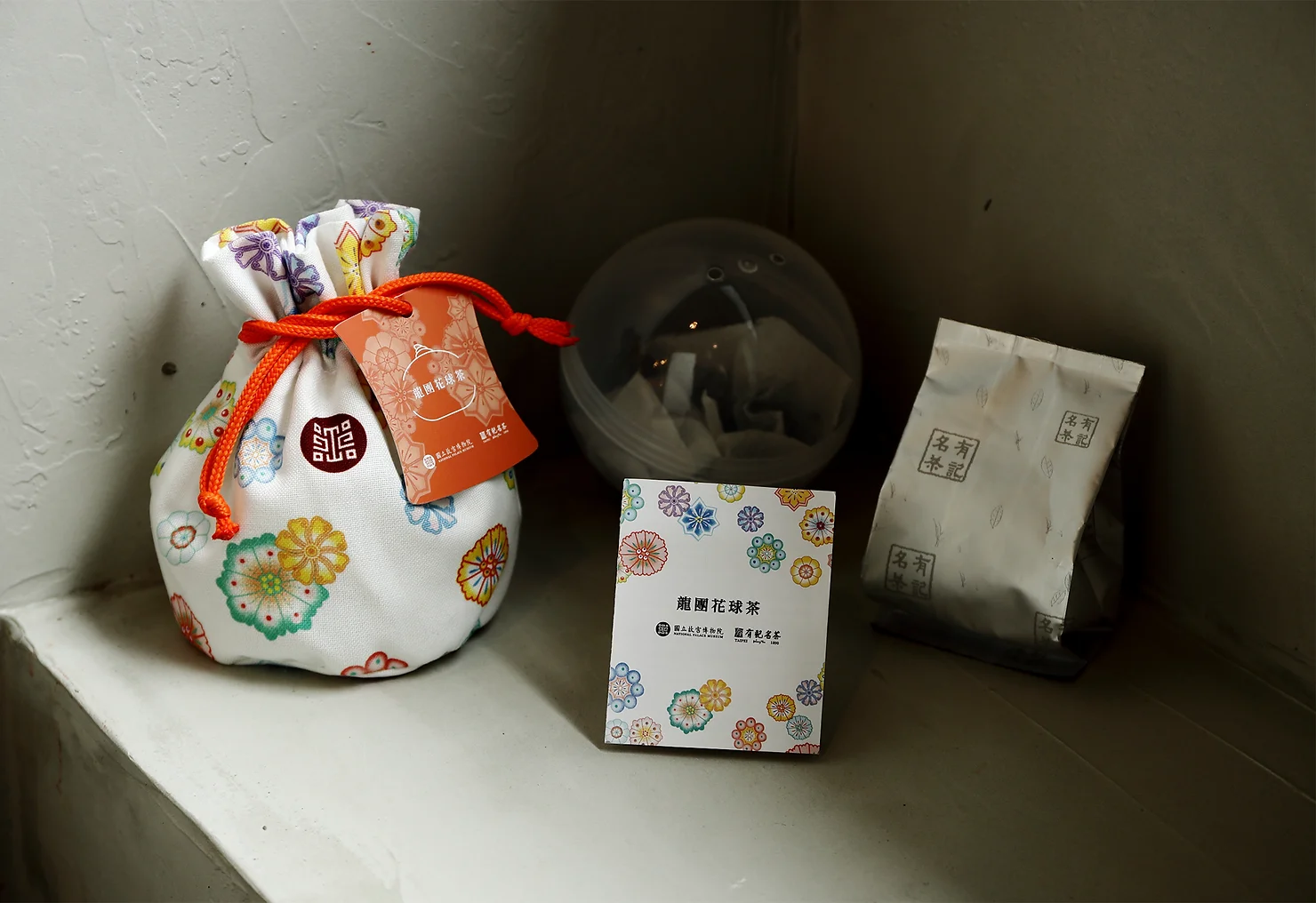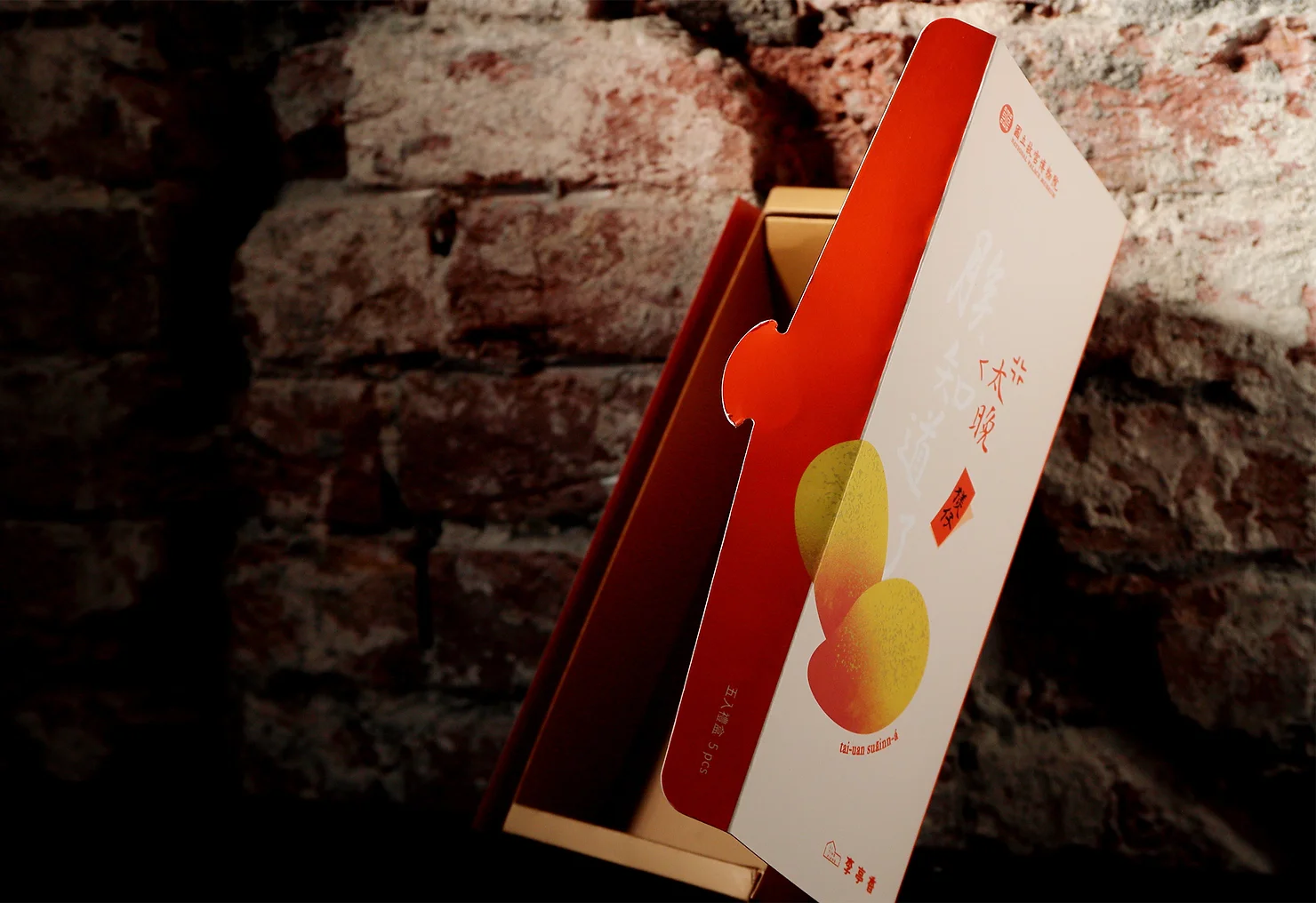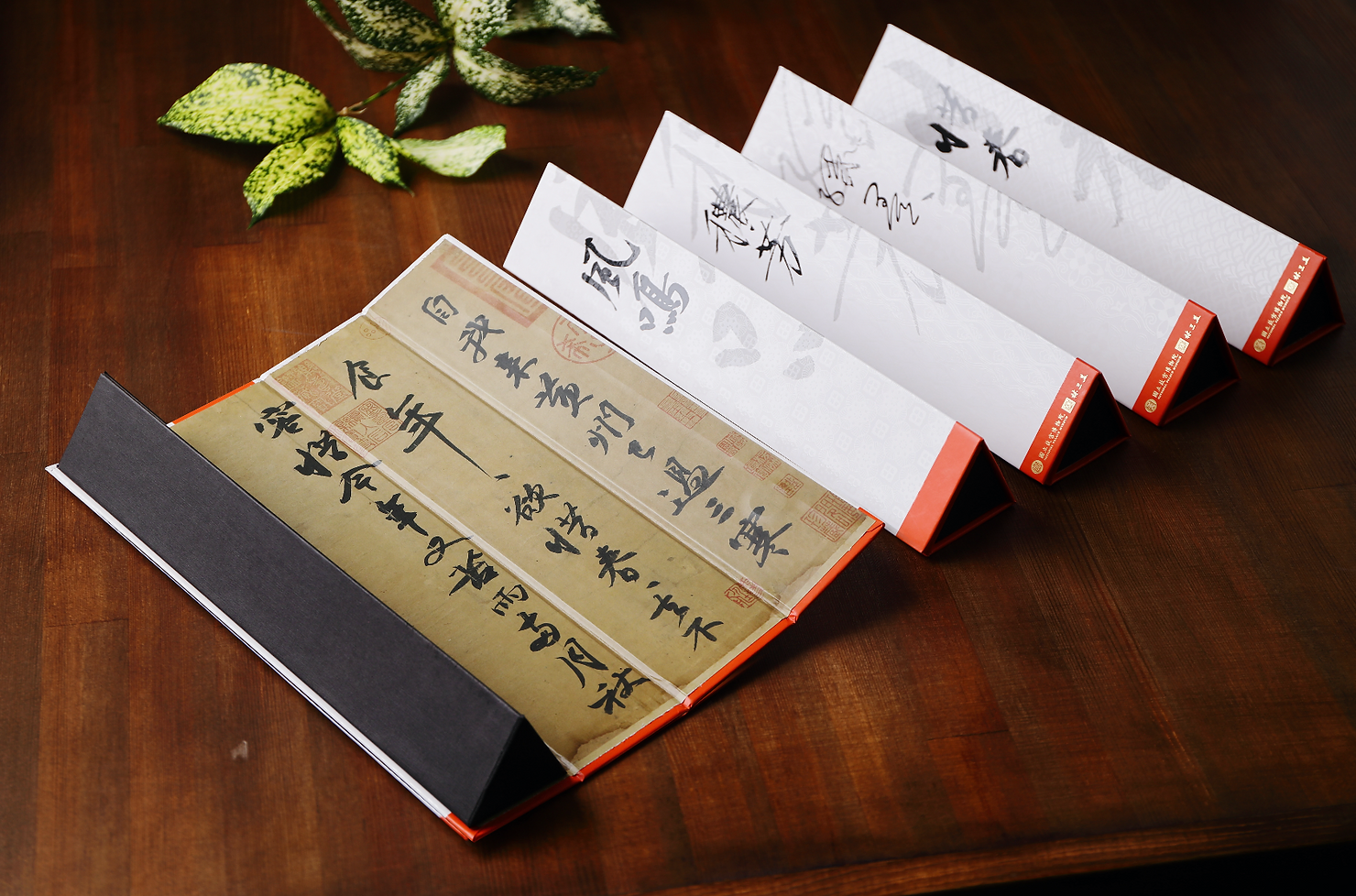時光之間
- 24scheme
- 2023年10月29日
- 讀畢需時 9 分鐘
已更新:7月25日

國立故宮博物院,為創造故宮與地方、國際、人民、產業、藝術與生活之連繫,與國內百年老商號:有記名茶、李亭香餅舖、林三益筆墨專家,共創品牌新勢與傳承,聯名創作文創特色商品。
|
The National Palace Museum, in its effort to forge connections between the museum and local communities, international audiences, the public, industries, arts, and daily life, has collaborated with renowned century-old Taiwanese businesses: Wang Tea, Li Ting Xiang, and LSY(Lam SamYick), to co-create a brand that blends modernity with tradition, producing unique cultural and creative merchandise.
千年前的朋友相聚,是隨水流放酒杯,飲酒、賞景、揮毫,八百多年前的一壺好茶,是一層浮出的沫餑湯花,講究啜飲風流雅趣,三百多年前的絕品糕點,是凡食用必講究搭配,不濫不浮的御膳點心。
「時光之間」主題,代表了情感間、歲月間,一個收集光陰的房間,跨越了「過去、現在、未來」,在這特殊時間、空間裡,精煉出浪漫、值得細細品味的瞬間和事物。
|
When friends from a thousand years ago gathered, they would set cups adrift on flowing water, sipping wine, enjoying the view, and practicing calligraphy. A fine tea from over eight hundred years ago was about delicately sipping the foam that floated atop the brew. A prized pastry from three hundred years ago was all about perfect pairings, the kind of royal delicacy that was neither excessive nor frivolous.
The theme "Long Long Time Space" embodies the emotions and passage of time, representing a space that captures the essence of "past, now, and future." In this unique time-space, moments and things that are romantically nuanced and worth savoring are distilled.
用一句話來總結飲茶、吃餅、用筆的浪漫時刻,並延伸至商品設計上想與消費者溝通的內涵,我們以「浪漫・夠經典」作為這次商品開發的主軸概念。
「浪漫」指的是青春記憶、鐘情瞬間、幸福片刻,「夠經典」則是千年故宮文物與百年臺灣老商號跨界聯合後才能撐起的說法。
|
To encapsulate the romantic moments of tea-drinking, pastry-eating, and writing and to convey the intended product design's essence to consumers, we’ve adopted "Romantic & Timelessly Classic" as the main concept of this product development. "Romantic" refers to memories of youth, moments of passion, and instances of joy, while "Timelessly Classic" alludes to the combination of millennia-old artifacts from the National Palace Museum and the centennial legacy of Taiwanese businesses.
文創商品開發 - 故宮 x 有記名茶
國寶奇種烏龍茶組:
以故宮藏文泥金鉅作《龍藏經》之貴,呼應有記名茶獨一無二的奇種製茶法;以范寬《谿山行旅圖》、倪瓚《容膝齋圖》之珍,開啟烏龍香韻繚繞的感官共鳴。有記「國寶奇種烏龍茶組」以百年嫡傳有記奇種烏龍,輝映故宮稀世珍寶,敬獻味覺與視覺的藝術饗宴。
故宮選品|
宋 范寬谿山行旅
元 倪瓚容膝齋圖
清 泥金龍藏經
有記名茶選品|奇種烏龍茶
National Palace Museum x Wang Tea
National Treasure Oolong Tea Set :
Mirroring the prestige of the National Palace Museum's famed "Dragon Hidden Scriptures," this tea set aligns with Wang Tea's unique tea-making method. Inspired by the revered pieces, Fan Kuan's "Travelers Among Mountains and Streams" and Ni Zan's "Rong Knee Studio," this set evokes a sensory resonance of oolong's aromatic allure. Wang Tea's "Chi Chong Oolong Tea Set" is a blend of a century-old tea-making tradition, showcasing the museum's rare treasures and offering a feast for both the palate and eyes.
龍團花球茶:
大小錯落、活潑可愛的團花紋是康熙、雍正、乾隆流行的裝飾紋樣,成為清宮器物上超IN的新花樣。有記「龍團花球茶」以清宮時尚又活潑的團花紋樣點綴,盛裝傳承百年傳統製茶工法- 團揉的茶球。讓喝茶,成為一種浪漫驚喜!
故宮選品|清乾隆 畫琺瑯球花提梁卣
有記名茶選品|高山烏龍茶
Oolong Tea Bags with Floral Patterns bag :
The lively and playful ball flower pattern, popular during the reigns of Emperors Kangxi, Yongzheng, and Qianlong, became the trendy design for Qing Dynasty artifacts. Wang Tea's "Oolong Tea Bags with Floral Patterns bag" features this fashionable and vibrant pattern, using traditional hand-rolled tea balls, turning tea-drinking into a romantic surprise.
仕女有梗茶包meme:
有記名茶嚴選北臺灣包種茶,以輕焙火精製,沖泡時香氣自然洋溢,滿室生香;茶梗—即茶葉的葉梗,更是茶湯裡韻味的重要來源之一,喝一杯茶梗茶,足以令人難忘豐富飽滿的茶香滋味。有記「仕女有梗茶包 meme」將故宮院藏仇英《漢宮春曉》春日早晨仕女日常,化作九款不同對話框的趣味迷因文山包種茶包,並將畫中的畫師變身為「梗王」,打造一款茶梗茶驚喜包。一盒十款別出心裁的茶包,讓你與朋友創造專屬的迷因、共享一杯好茶!
故宮選品|明 仇英 漢宮春曉
有記名茶選品|文山包種茶
meme Wenshan Pouchong Tea - meme tea bag :
Featuring carefully selected Pouchong tea from Northern Taiwan, this tea offers a naturally fragrant aroma when brewed. The tea stalks add a unique depth of flavor to the brew. Wang Tea's "meme Wen Shan Pouchong Tea" presents a delightful collection of memes based on the National Palace Museum's painting "Spring Dawn in the Han Palace" transforming the painter into the "King of Memes." Each pack offers ten uniquely designed tea bags, allowing you to share a cup of tea with friends and create personalized memes.
文創商品開發 - 故宮 x 李亭香
臺灣檨仔芒果酥禮盒:
檨仔,台語的芒果,發音為suāinn-á。數百年前,臺灣芒果飄香至宮廷,連清康熙皇帝都曾聽聞其美名。李亭香「臺灣檨仔芒果酥禮盒」再現檨仔之美,嚴選當季當令的台南愛文芒果,以傳統工法製成芒果酥,果實纖維飽滿、入口酸甜回甘,邀您品嚐如和皇帝共享般的美好滋味。
故宮選品|閩浙總督覺羅滿保康熙58年03月28日奏進臺灣 番檨仔 土產芒果等物摺
李亭香選品|特製芒果酥
National Palace Museum x Li Ting Xiang
Taiwanese Mango Cake Gift Box :
The Taiwanese term for mango, "suāinn-á," became known even to Emperor Kangxi of the Qing Dynasty centuries ago. Li Ting Fragrant's "Taiwanese Mango Cake Gift Box" reinvokes the beauty of this fruit, using ripe Aiwen mangoes from Tainan, and traditional methods to make the cakes. The result is a sweet, tangy, and luscious delicacy reminiscent of what royalty might have savored.
同心餅:
故宮院藏鏤雕象牙雲龍紋套球,有鬼功球、同心球美稱,球內套球、逐層鏤空,每層刻上極精緻圖案花紋,層層都能旋轉、獨立鑑賞,合而為巧奪天工的藝術品,李亭香「同心餅」取李亭香鎮店之寶- 27 層餅皮之「平西餅」,以古法代代相傳、層層相疊,呼應故宮同心球,獻上百年同心的手做溫度。
故宮選品|清 十九世紀 廣東鏤雕象牙雲龍紋套球
李亭香選品|特製平西餅
Concentric Hearts Cake :
National Palace Museum's"Set of carved openwork concentric ivory balls with cloud-and-dragon decoration" known for its layers that can rotate independently, Li Ting Xiang's "Concentric Hearts Cake" embodies the essence of their signature 27-layer "Pingxi Cake." This traditional method, passed down through generations, mirrors the artistry of the museum's artifact, symbolizing a century of unified craftsmanship.
花漾綠豆糕:
康熙、雍正、乾隆皇帝喜歡大膽創新器物,在清宮藝品上大玩「團花」紋飾!「團花」是多種花卉轉化成兩兩相疊、輻射狀的花樣,相傳受到日本蒔繪的影響。時至乾隆時期,團花紋更鮮明、顏色更活潑,成為潮流時尚的新紋飾。李亭香「花漾綠豆糕」將百年滋味玩出浪漫新花樣,6 款各自美麗的故宮團花紋,搭配一盒花樣餐巾紙,讓下午茶時光很不一樣!
故宮選品|清 乾隆 銅胎畫琺瑯花口蓋碗
李亭香選品|特製壓紋綠豆糕
Floral Mung Bean Cake :
Emperors Kangxi, Yongzheng, and Qianlong were known for their bold and innovative designs, especially the "Tuanhua" (group flower) pattern which is believed to have been influenced by Japanese art. By the Qianlong era, the design became even more vibrant and trendy. Li Ting Xiang's "Floral Mung Bean Cake" is a playful twist on a century-old flavor, with six different patterns from the museum's collection, making your tea time an extraordinary experience.
文創商品開發 - 故宮 x 林三益
名家筆組(穠芳、驟墨、風鳴、惜春):
故宮特色鮮明之名家墨寶作品,依照書體特色,林三益以其百年製筆工藝打造出最能寫出其書體之毛筆,外盒以墨寶中的選字命名、以書體作設計,為此毛筆增加推崇印象。林三益製筆由老師傅篩選出最適合的毛料手作完成名家製筆,可望成為流世書風典範。
故宮選品|宋徽宗詩帖、唐懷素自敘帖、宋黃庭堅松風閣、宋蘇東坡寒食帖
林三益選品|訂製狼毫、兼毫毛筆
National Palace Museum x LSY (Lam SamYick)
Master Calligraphy Set :
Featuring distinct masterpieces from the National Palace Museum( Poem of Fragrance by Huizong, Autobiography by Huaisu, Hall of Pines and Wind by Huang Tingjian, Cold Food Observance by Su Shih ), LSY, with a century-old brush-making technique, creates brushes that best represent the calligraphy styles. The outer box is named after selected characters from the masterpieces and designed according to the calligraphy style, enhancing the prestige of the brush set. LSY's brushes are handcrafted by skilled masters using the most suitable hair materials, aiming to set the standard for timeless calligraphy.
浪漫集字 萬用臨帖毛筆文具組:
以故宮院藏銅胎畫琺瑯球花提梁卣上的團花紋、集王羲之書跡為日常小語,林三益「浪漫集字萬用臨帖毛筆文具組」展現筆墨生花之美,讓想寫字的你,輕鬆臨摹經典,學習書藝添樂趣;一張張親筆寫出的萬用卡,完成後可以郵遞寄出,與親人好友分享手寫的溫度與經典的浪漫。
故宮選品|
清乾隆畫琺瑯球花提梁卣
晉王羲之平安何如奉橘帖
唐懷仁集聖教序
林三益選品|豹狼毫小楷
Romantic Calligraphy - Multi-purpose Calligraphy Set :
Based on the flower patterns from the cloisonné pot with a spherical body and handle from the National Palace Museum and the writings of Wang Xizhi, LSY's "Romantic Calligraphy Multi-purpose Calligraphy Set" showcases the beauty of ink and brush. It allows enthusiasts to effortlessly imitate classics, making learning calligraphy fun. The hand-written cards can be mailed to share the warmth of handwritten notes and the romance of classics with loved ones.
欽定一甲文昌筆組:
相傳 4 是文昌星代表數字,書桌擺放 4 支毛筆,就能提升考運。林三益「欽定一甲第一名筆組」以故宮院藏《欽定一甲第一名殿試策》設計典雅的文昌筆組,盒身24 公分,正好為順利通過考試的「順科」之數,步步高升的筆座,上面安置四款具有增添智慧的文昌筆,整體具有學運大開之意,盒身可放准考證或學生證,祝福莘莘學子學業進步、節節高升!
故宮選品|
光緒十五年欽定一甲第一名殿試策
明董其昌臨張旭郎官壁記軸
清文淵閣本四庫全書
林三益選品|文昌筆
Supreme Scholar's Brush Set :
It is said that the number 4 represents the Scholar Star. Placing 4 brushes on the desk can enhance one's luck in examinations. LSY's "Supreme Scholar Brush Set" is elegantly designed based on the "First Rank Scholar's Examination Papers" from the National Palace Museum. The box, measuring 24 cm - signifying success in exams, holds four brushes symbolizing wisdom. The set represents academic success, with space in the box for student ID or exam entry tickets, wishing students academic excellence.
社群IP創造/經營
Community IP Creation/Management(Model sheet by uj Hsu)
























